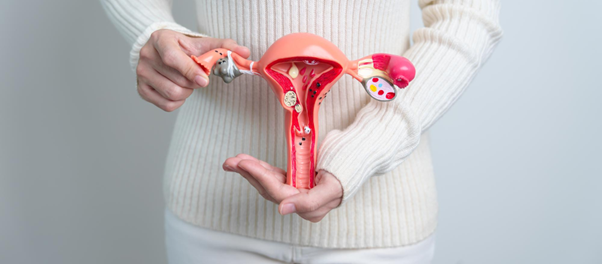What are Uterine Fibroids?
Uterine fibroids are non-cancerous growths that form in or on the uterus. They are made up of muscle and fibrous tissue and can vary in size and shape. While many women may have fibroids without any issues, they can sometimes cause discomfort and other problems.
Types of Uterine Fibroids
- Intramural Fibroids: These grow within the wall of the uterus and are the most common type. They can make the uterus larger and cause discomfort.
- Submucosal Fibroids: Located just beneath the lining of the uterus, these can lead to heavy bleeding and menstrual issues.
- Subserosa Fibroids: These grow on the outer surface of the uterus and might not cause symptoms unless they press on other organs.
- Pedunculated Fibroids: These are attached to the uterus by a stalk and can develop either inside or outside the uterus.
Symptoms of Uterine Fibroids
Many women with fibroids don’t have symptoms. However, when symptoms do occur, they may include:
- Heavy or long-lasting menstrual bleeding
- Pelvic pain or pressure
- Frequent need to urinate
- Pain during sex
- Back or leg pain
If you notice any of these symptoms, it’s important to talk to your healthcare provider.
Causes of Uterine Fibroids
The exact cause of fibroids is not fully known, but several factors may contribute:
- Hormones: Oestrogen and progesterone, the hormones that control the menstrual cycle, can help fibroids grow.
- Genetics: Having a family history of fibroids may increase your chances of developing them.
- Age: Fibroids are more common in women aged 30 to 40.
Diagnosis
If your doctor suspects fibroids, they may perform a pelvic exam and recommend imaging tests like:
- Ultrasound: This test uses sound waves to create images of the uterus.
- MRI: This imaging test gives detailed pictures of the uterus and fibroids.
Treatment Options
How uterine fibroids are treated depends on how severe the symptoms are. Treatment options can include:
- Watchful Waiting: If fibroids aren’t causing major issues, your doctor may suggest just monitoring them.
- Medications: Hormonal treatments can help with symptoms like heavy bleeding and pressure.
- Non-Invasive Procedures: Techniques like MRI-guided focused ultrasound can shrink fibroids without surgery.
- Surgery: If symptoms are severe, procedures like myomectomy (removal of fibroids) or hysterectomy (removal of the uterus) may be needed.
Lifestyle Changes and Home Remedies
In addition to medical treatments, some lifestyle changes may help manage symptoms:
- Diet: Eating plenty of fruits, vegetables, and whole grains can support overall health.
- Exercise: Regular physical activity can help reduce symptoms and improve well-being.
- Stress Management: Practices like yoga or meditation can help manage stress, which may affect symptoms.
Uterine fibroids are common and can affect many women. At Gayatri Maternity Nursing Hospital & IVF Center, we provide care and support for women dealing with fibroids. If you have any concerns or symptoms related to fibroids, please reach out to us for a consultation. Our dedicated team is here to help you understand your options and find the best treatment for you.
Your health and well-being are our top priorities!

